Top 7 Major game features you didn't know were originally glitches
Working as intended
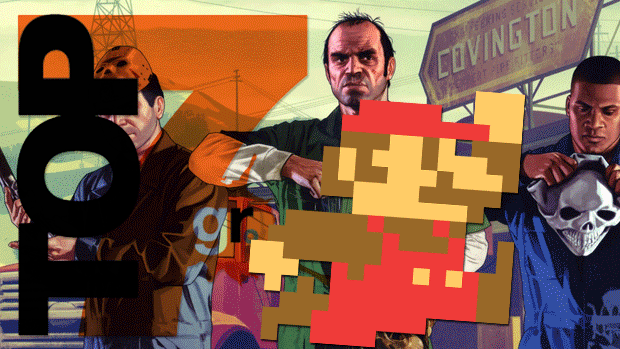
Remember that time you were playing that one game, but you clipped through the world and fell until the game crashed and you lost a bunch of progress? Yeah, that's not very fun. Bugs and glitches can sometimes ruin a good time: There's nothing more immersion-breaking than moving the camera down in a third-person shooter and seeing your character's eyes and teeth creepily hanging in the air. Other times, though, glitches aren't just enjoyable--they're revolutionary.
Turns out, some of the most important elements of major games only occurred because the developers screwed up. One person moves a decimal point on the wrong number and BAM!, they've created a new genre. Or they've planted a seed that'll have your character fall through the world and crash the game. But, I'll be focusing on the optimistic side of things for today, discussing the most memorable elements of games born from very fortunate glitches.
7. Mario's multi-coin blocks were originally patched out of the game
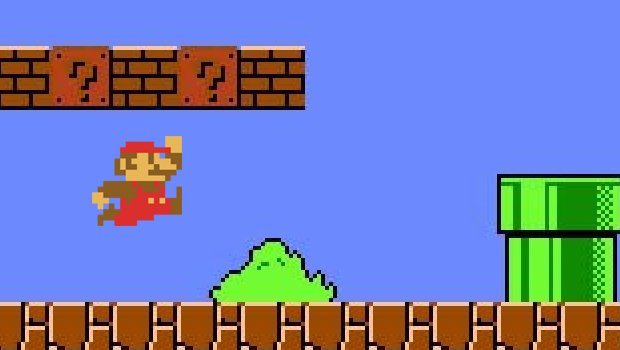
You all know the feeling: You walk up to a question-mark block, jump and hit it, and watch as a coin pops out. But then something remarkable happens. The block doesn't turn solid, it stays as a question mark. So you can hit it again. And again. And again. But this wasn't the original intent.
When Super Mario Bros. was being coded, being able to hit the block to release multiple coins was a programmer error. Each block was to contain one coin--that's that. But after going in and fixing things, the designers realized that the flaw added something to the game. So, in a move that I'm sure made some programmer that spent a weekend debugging hundreds of lines of code VERY unhappy, Nintendo decided to add it back in.
6. Devil May Cry only exists because of Onimusha's buggy combat
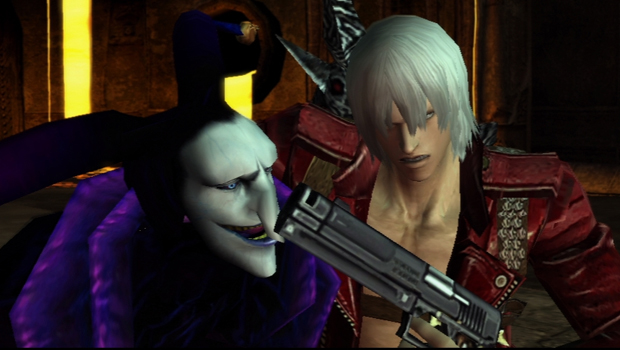
Devil May Cry's creation was curious. After three Resident Evil games, Capcom wanted something different, so they tasked Resident Evil 2 director Hideki Kamiya with creating the next generation of survival horror. The result was something that was too over-the-top to be a Resident Evil, so Kamiya took that idea and turned it into Devil May Cry. But where did he get the idea for enemy-juggling and over-the-top combat? Well, that came from an even more unlikely source.
During the development of Capcom's Onimusha: Warlords, the developers hit a snag. The hack-and-slash had a strange glitch that allowed your hero Samanosuke to juggle enemies with his sword. That didn't really fit within the methodical gameplay, so it was cut but it inspired Kamiya to build an entire game around that idea. The result? Dante, smacking enemies into the air and keeping them afloat with his dual pistols.
5. Race and Chase's angry AI cops spawned Grand Theft Auto
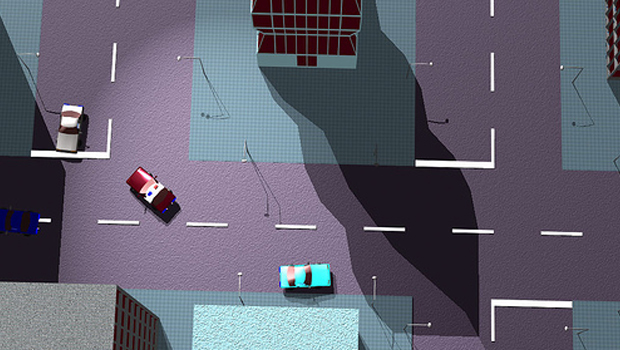
Before Grand Theft Auto, there was Race and Chase. DMA Design's open-world racer would let you play as either a cop or a criminal and I don't know, race around? It doesn't matter--according to the developers, it wasn't very fun. It crashed all the time, and the "living world" changed how people played, making for a much less interesting game than DMA intended to develop. Then something broke, and everything fell together.
Weekly digests, tales from the communities you love, and more
GTA designer Gary Penn described it in an interview, saying "One day, I think it was a bug, the police suddenly became mental and aggressive. It was because they were trying to drive through you. Their route finding was screwed I think, and that was an awesome moment, because suddenly the real drama was, "Oh my God, the police are psycho--they're trying to ram me off the road." Turned out, being chased by aggressive cops was fun. Who knew?! This realization refocused Race and Chase, and led to the creation of gaming's biggest open-world franchise.
4. Strafe-jumping in Quake was actually removed at one point
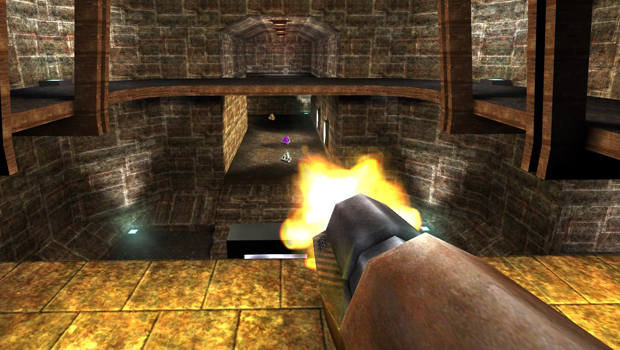
Quake found a healthy gaming community soon after launch, with gamers flocking to the polygonal FPS. But, as is the case with any game, its players almost immediately started latching onto exploits--many of which were patched or removed in future releases. But not every problem needs a solution. One such technical hiccup was strafe-jumping, wherein you basically swing your character forward with the momentum caused by jumping and strafing at the same time.
What started as a glitch in the code became a standard maneuver among Quake players. Future releases embraced it, with some even adding tutorials that taught players how to use the exploit. The only time the developers ever rebelled against it was in Quake 3: Arena, where it was removed in a patch before being promptly added back after the community lost its freaking mind.
3. Creep-denying in Defense of the Ancients nearly broke the game originally
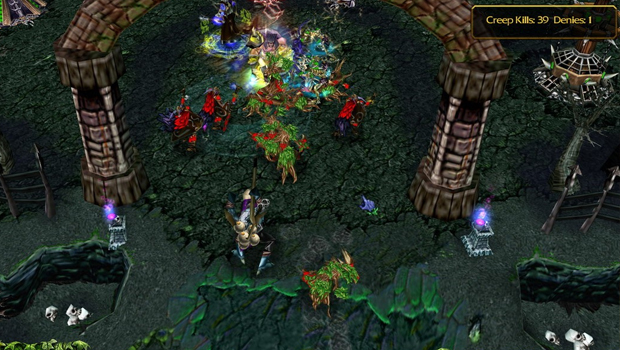
One of the most important elements of the MOBA genre (think League of Legends and Dota 2) are the creeps, or minions. These AI-controlled units enforce a stalemate, meeting each other in the middle of the battlefield and creating non-stop conflict. Killing them earns you gold, experience, and helps you slowly push the battle in your favor. Defense of the Ancients, which was built in the Warcraft 3 engine, even included the ability to kill your own minions, denying your opponent of some of the gold and experience they'd otherwise get. But this wasn't actually how it was supposed to be.
In the first versions of DotA, denying your enemies of creep kills wasn't just an exploit, but threatened to break the game. Enemies would get zero reward from their death, making it so a good player could totally throw off the balance of a lane. In future updates, this exploit was maintained but balanced for better gameplay, turning a game-breaking exploit to an actual element of the genre.
2. Street Fighter's combos were originally a mistake
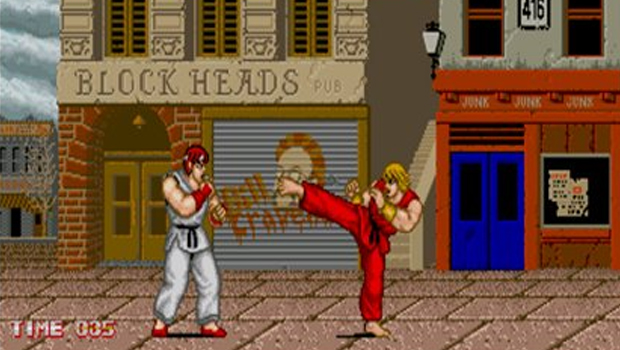
Combos are fighting games. For real, name a fighting game that isn't built on combos. Karate Champ? Seriously? That doesn't count. Every real fighting game puts the emphasis on landing multiple attacks before your opponent can respond. That's the way it's been since Street Fighter 2--but this gameplay style wasn't intentional. During the testing of SF1, one of the developers noticed it was possible to glitch the game and sneak in extra strikes. If he'd have followed-through, it would've been cut.
Buuuuut, he didn't feel the need to cut it it to anyone, because he didn't think anyone would be good enough to find and exploit the bug. In order to land a combo, you'd need to be super skilled, so why bother? Lucky for him (and the genre), fighting game fans proved tenacious enough to master everything there was to learn about SF1, helping to create the genre you know and love. Or, hate. I don't know you. Do you like fighting games?
1. Creepers in Minecraft were originally intended to be long pigs
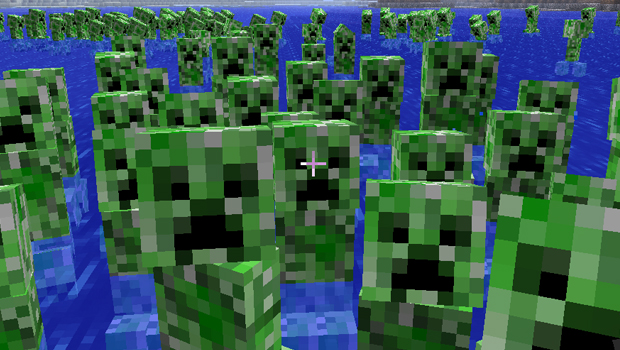
"Minecraft Steve" might technically be the main character of the popular build-em-up Minecraft, but he's hardly the most popular figure to come from the best-selling game. That title would have to go to Creepers: the strange, green, cactus-looking things that scutter around before exploding in a terrifying display of polygonal violence. There are toys, plushies, shorts, hats--Creepers are everywhere. But, according to creator Markus "Notch" Persson, their creation were nothing more than a mistake.
Notch was trying to add a pig into the game, but didn't have any modeling programs to work with. Instead, he just had to do it in the code, but mixed up the numbers. "I accidently made [the pig model] tall instead of long, so it was like a tall thing with four little feet. And that became the Creeper." And so, one of the most popular gaming icons of the last few years was born because the developer mistakenly mixed up his Xs and Ys.
Oops
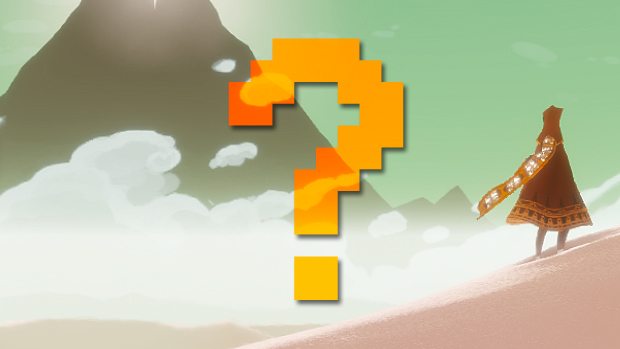
Oh, and the end of Journey? That emotional, intense climax? It only happened because the game crashed during a test, and the tester thought he'd died in the game. Then he cried, and the developers said, "huh, maybe we should do something about this." The game industry is a crazy place, where mistakes become wonders, and we're excited to see what other failures become gameplay staples in the next generation.
And if you're looking for more, check out the best game modes created by players and top 7 games that were originally totally different.

Hollander Cooper was the Lead Features Editor of GamesRadar+ between 2011 and 2014. After that lengthy stint managing GR's editorial calendar he moved behind the curtain and into the video game industry itself, working as social media manager for EA and as a communications lead at Riot Games. Hollander is currently stationed at Apple as an organic social lead for the App Store and Apple Arcade.


